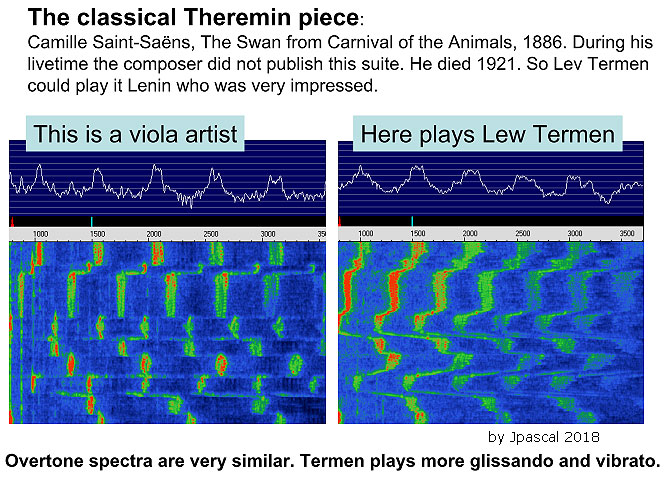I am trying to give an interim summary to my above results. This is a little exhausting, hope it is understandable.
1. The hand capacitance is nearly linear to the pitch change of an ordinary theremin, post 72, 74 (a few inches away from the antenna). That is, we just have to look at hand capacitance and distance to solve any pitch linearity problem. Body capacitance and in series C or parallel C to the connected antenna shifts only oscillator frequency and the variable pitch range (post 78, 80).
2. This pitch is - by using rod antenna - nearly proportional to Ah/(d ln(d/r)), so that depends on the area of the hand Ah in front to antenna (conductive surface "seen" by antenna), on the hand distance d and on the radius r of the rod. Length of the rod is not essential here as it is long enough to the hand dimension. See post 72 with the here in TW first published new fomula. (note: in case of a plate condensor or plates as antennas this dependence is approximately proportional to Ah/d.)
3. These dependencies would generally imply the impossibility of obtaining pitch linearity (logarithm of hand capacitance or pitch should be proportional to distance). Therefore, two additional measures are necessary and useful in practice:
a) using the pitch offset function / knob to linearize the low pitch frequencies, see post 61.
b) for the near distance using a proper moving path of hand to the rod, see example in post 64, 66. Alternativ a special antenna design, see example in post 68.
4. Resonance conditiones in a theremin circuit are determined by inductances and capacitances that result in maximum impedances or in conductances, as shown in post 76. The advantage of an EQ coil is, that role of stray and some further additional capacitances from circuit are negligible if the series resonance with antenna at lower frequency is used. (In experimental practice sometimes occures an oscillator frequency jump, this is due to the various possible resonance conditions). Approximation formula to find the right frequency I give in post 76.
(Before I blindly trusted LTSpice I calculated the network in my post 77 step by step in Excel using Kirchhoffs rules and with complex (jX) impedances of all L and C. Results see in post 77. The math steps behind would not be of interest here, I thought, but is not rocket science.)
5. Open task is the "miracle condition" for pitch enhancement and linearization improvement within the pitch range. In a next topic I will try to find an answer.


